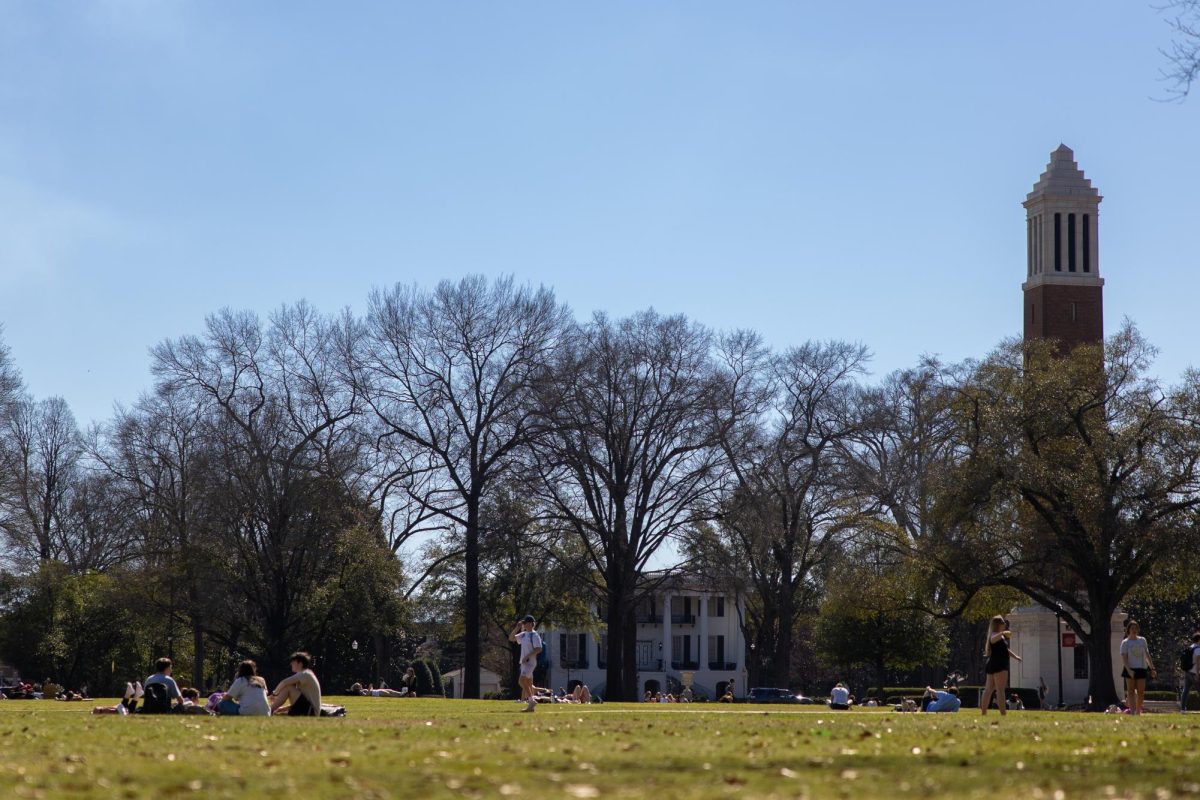Often studied, taught and explored, the civil rights movement of the 1960s is the subject of many books. But author Lila Quintero Weaver presents the time period in an alternative way – through the eyes of an immigrant.
Weaver, who is originally from Argentina, spoke at The University of Alabama on March 14 about her experience moving to Alabama during the beginning of desegregation and how she tells her story through her graphic novel, “Darkroom: A Memoir in Black and White.”
“It started off as a senior project for my New College degree,” Weaver, who attended the University to finish her degree in 2005, said. “I was inspired by graphic novels that I had recently encountered, like ‘Persepolis’ [by Marjean Satrapi]. I was inspired to write my life story through that medium since I’m an artist.”
Weaver moved from Argentina to Marion, Ala., with her family when she was 5 years old. “Darkroom” is her personal account of what she witnessed during the civil rights movement.
“I was generally aware that things were miserable for black citizens,” Weaver said in her speech.
Cameron Parsons, a junior majoring in American studies and history and an attendee of the speech, said the historical aspect sparked his interest.
“I didn’t know what to expect,” Parsons said.“This is fascinating to me. I’m a history major, and I love stuff like this.”
During her presentation, Weaver showed pages of her book and gave a preview to what it entailed. It included memories ranging from her family first moving from Argentina to her first black classmate to the first laws of desegregation.
One-story she told was of a little-known mob attack on peaceful protesters in Marion, and the murder of Jimmie Lee Jackson. These events led to the famous march from Selma to Montgomery, Ala. The attackers destroyed all photographic evidence of the event, making the attack relatively unknown.
Some audience members, such as Cassidy Ellis, said they were surprised by the story.
“I learned a lot today about the situation in Marion,” said Ellis, a senior majoring in history. “I wasn’t aware of it. I’m from Montgomery and I had always heard the stories, but never that one.”
Growing up in Alabama in the 1960s, Weaver witnessed many examples of racial prejudice, many of which are described in “Darkroom.”
“Before 1964, when federal laws were passed that barred the ‘whites only’ signs, I remember seeing [the signs] as a child,” Weaver said. “For example, there was a drug store that [only whites] could go into and order ice cream and such. When the new law was passed, that drug store and many like it just took the counter down because they didn’t want to serve black people at all. So instead of having to serve everyone who came in, they just did away with it. That’s just one tiny example of many.”
Weaver said though she witnessed racial prejudice, she was not directly affected by it, as she was considered white.
“I would say that whatever kind of prejudice that I experienced was not about race as much as it was about being a foreigner, being an outsider, being someone who did not quite fit in,” she said.
Weaver said she hopes anyone who reads the book will relate and learn from it.
“I hope that [readers] will find a point of identification somewhere,” Weaver said. “Either they were the person discriminated against or maybe the person who kind of perpetuated discrimination or racial hatred towards someone else. Or perhaps they will just learn the history of our state and some of the hard things that happened.”
Leading in today’s Crimson White:
Alabama students, alumni create popular web series








